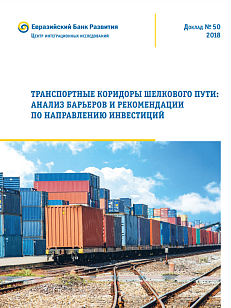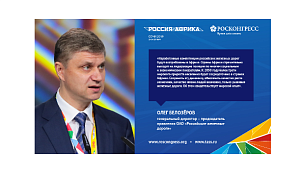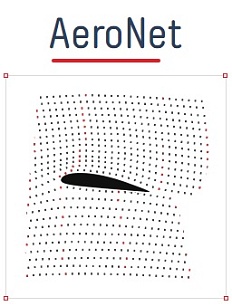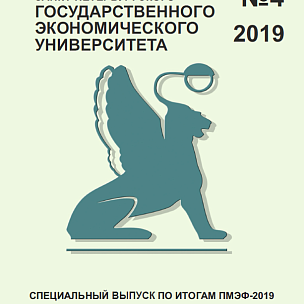Is Russias logistics system ready for more eastbound traffic? Russian industry needs to quickly decide how to compensate for the loss of several major markets for its products. One of the most promising destinations is the Asia Pacific region, but logistics are a bottleneck for this pivot to the East. There is not enough shipping capacity, and the problem can only be solved with massive investments.
The Far East is crucial for the economy not only due to its natural wealth and people, but also because of its favourable geographical location, which is capable of transforming the region into an effective logistics hub between Asian markets and the European part of Russia. There is a good reason why transport corridors are one of the traditional topics at the Eastern Economic Forum. This year, a whole pillar of the business programme has been dedicated to this issue: Everyone Has Their Own Route: The Logistics of a Changed World.
The world truly has changed, and Russian companies have responded to these changes by stepping up their activities in areas where constructive business cooperation is possible. This primarily includes two large clusters: MENA countries (a region that unites states in the Middle East and North Africa) and the countries of the Asia[1]Pacific region. This is a matter of altering the structure of both imports and exports. The situation appears to be more complicated with respect to exports: there is a need to transit huge volumes of products that are difficult to transport, such as hydrocarbons, coal, and steel. In particular, Russian ferrous metals enterprises need to redirect about 4 million tonnes of steel products per year due to sanctions, according to a letter from Alexey Mordashov, the president of the Russian Steel Association (which includes the largest ferrous metals companies) and the main owner of Severstal.

Meanwhile, in the Asia-Pacific region, Russias logistics system is already operating at the limit of its capabilities. Minister for the Development of the Russian Far East and the Arctic Alexey Chekunkov (see an interview with him on page 124) says the shortage in carrying capacity now exceeds 70 million tonnes and will reach 150 million tonnes in the next three years. The Russian government and big business are now primarily focusing on expanding the capacity of the Northern Sea Route (NSR) and the Eastern Operating Domain (which includes the Trans-Siberian and Baikal-Amur Mainlines and all related infrastructure).
Arctic transit
In 2022, the government drafted a plan to develop the NSR for the period until 2035 and is expected to approve it in the near future. In particular, there are plans to launch a regular coastal line running from St. Petersburg (Murmansk) to the ports of the Far East and back with at least two round trips per year. A Russian container operator for international transportation along the NSR will also be created.

The plan also includes measures to modernize and build port infrastructure, sea gates, and railway and river transport corridors, as well as conduct dredging operations along the NSR. This includes the construction of 12 port terminals and the modernization of two existing ones. Another key focus is the development of the cargo and icebreaker fleet, shipbuilding, and ship repair facilities in the Arctic. A total of 153 vessels are to be built, including 12 icebreakers and 46 rescue fleet vessels.
Total funding for the plan to develop the NSR until 2035 could amount to approximately RUB 2 trillion. In addition, private investors are expected to invest some RUB 15.6 trillion by 2035 in the development of investment projects that will shape the cargo base of the NSR, which will ensure an increase in gross product by RUB 28.5 trillion and non-tax revenues to the Russian budget of RUB 16.3 trillion. In early August, Rosatom announced plans to revive the NSR Main Directorate (Glavsevmorput) that existed in Soviet times. In the first six months of 2022, cargo turnover along the NSR increased by 5% compared with the same period of last year. The new entity will help streamline shipping, enhance the safety and stability of the route, and thus boost its capacity.

Unexpectedly, global warming could be Russias ally in expanding transit via the NSR. The Federal Service for Hydrometeorology and Environmental Monitoring estimates that the area covered by ice in summer has decreased in recent years, and this trend will continue in the foreseeable future. Climate change scenarios predict that the Arctic Ocean could be completely free of ice by the end of summer in the second half of the 21st century, i.e. Arctic ice could become white ice. However, there will be drifting ice along the NSR for more than six months of the year, which would make it possible to continue classifying the waters as ice-covered areas. This means that Russia would retain the right to single-handedly regulate navigation in this part of the Arctic in accordance with Article 234 of the Convention on the Law of the Sea.

Betting on the BAM
Railway infrastructure in the east was not getting the job done long before China became Russias main priority in foreign trade relations. The development of the railway infrastructure of the Eastern Operating Domain began in 2013. The comprehensive modernization of the two main branches the BaikalAmur Mainline (BAM) and the TransSiberian Railway (TSR) should increase the railway networks capacity from 75 to 180 million tonnes, quadruple transit container traffic, and significantly reduce the delivery time of goods by rail.
The first stage of an investment project that was completed in 2021 resulted in the construction of the new Baikal Tunnel on the DelbichindaDaban stretch and a bridge across the Zeya River, as well as the electrification of the last section of the BorzyaZabaikalsk railway to the border with China. The largest project was the construction of the new Baikal Tunnel, which opened in summer 2021. The tunnel has increased throughput capacity by 150%.
In 2021, the government approved the second stage of the investment programme, which calls for the construction of more than 1,300 km of railway tracks. Funding for the programme, including for container transit infrastructure, was estimated at around RUB 780 billion by 2024. However, in mid-July 2022, reports emerged indicating that the cost of the second stage of expanding the BAM and TSR had increased to RUB 894.3 billion. Kommersant reports that Russian Railways and the relevant ministries are discussing the possibility of transferring RUB 188 billion this year from the National Welfare Fund (NWF), which previously had been earmarked for the construction of railways coming out of Yakutia, to provide the railway monopoly with additional funds for the second stage of the expansion of the BAM and TSR.
These funds had initially been set aside to expand the Tynda KomsomolskVanino section of the BAM for RUB 332.6 billion (including funds from the NWF) in order export 16.6 million tonnes of coal per year from the Elga deposit. But Albert Avdolyans A-Property, the owner of the Elga field, had an alternative project to build a private road from Elga to Chumikan on the Sea of Okhotsk, and after long deliberation, the company nevertheless decided to implement this project. It has not yet been determined where these newly available funds will now be directed. However, considering that the transit of goods to Asia may end up being several times higher than initially imagined prior to 2022, this probably will not be the last redistribution of funds and increase in the budget for the «construction project of the century».

Border crossing
The BAM and TSR are the main bottleneck in every sense of the word for the transit of goods to Asia, but not the only one. Shipping goods to the border is not simply enough since they still need to be transported across the border and there needs to be proper logistics infrastructure on the other side. In late July, reports emerged about a proposal by the Ministry of Transport to develop border crossings to China, Kazakhstan, and Mongolia in eight years and build 3,000 km of railways on their territory, in addition to 369 km of tracks in Russia. Total investment in the project would amount to USD 30.8 billion.
In particular, the plans call for building a second railway border crossing to China in the Trans-Baikal Territory, and to restore the operation of the JalindaMohe border crossing in the Amur Region. The latter was suspended in the early 2000s due to a low volume of cargo traffic. Resuming operations would reduce the distance of transporting goods between Russia and China by 1,000 km.
This proposal by the Ministry of Transport will lay the foundation for the model that the Russian government is drafting for the countrys development under the new geopolitical conditions until 2030.

A third route
The government is also studying another option for a short, at least on the map, route to China through Altai. A similar idea was announced back in the 2000s as part of the Altai gas pipeline project running along this route. However, the project was postponed at the time due to technical difficulties, the inability to agree on a price with China, and environmental issues (the road was supposed to pass through Ukok Nature Park). Now the plan has been revived. In August 2021, Russian Railways Deputy General Director Alexey Shilo said his company was working on three options for railway lines in Altai. Depending on the route that is chosen, the length of the tracks could range from 1,000 to 1,600 km, including through difficult mountainous terrain.

It is still too early to assess how successful the Russian economys pivot towards the East is proceeding. However, the initial figures are encouraging. Chinas General Administration of Customs said that trade between China and Russia increased by 27.2% year-on-year in the first half of 2022 and reached USD 80.7 billion.
The statistics show that Chinese exports to Russia increased by 2.1% in JanuaryJune to USD 29.6 billion. Imports of Russian goods and services to China jumped by 48.2% to USD 51.1 billion. In June, trade between the two countries reached an impressive USD 14.8 billion. Chinese exports to Russia amounted to USD 5 billion, while imports stood at USD 9.7 billion.






